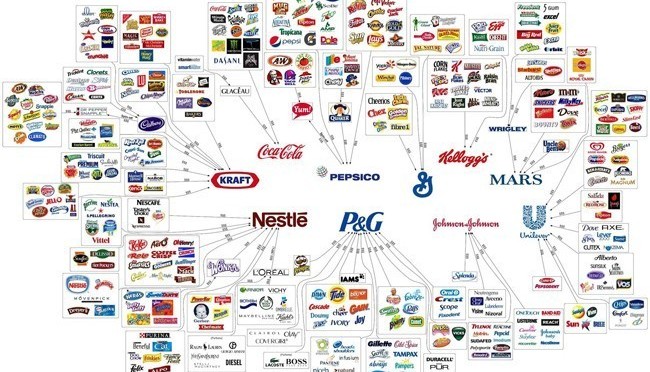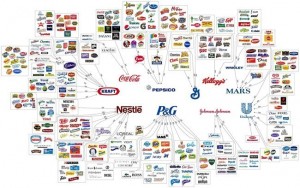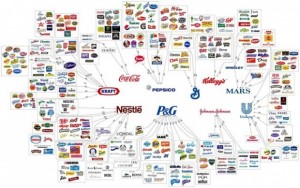The red
volcanic soil in the surrounding region is particularly well suited to the growing of the blue agave, and more than 300 million of the plants are harvested there each year.
[1] Agave tequila grows differently depending on the region. Blue agaves grown in the highlands region are larger in size and sweeter in aroma and taste. Agaves harvested in the lowlands, on the other hand, have a more herbaceous fragrance and flavor.
[2]Mexican laws state that tequila can be produced only in the state of Jalisco and limited regions in the states of
Guanajuato,
Michoacán,
Nayarit, and
Tamaulipas.
[3] Mexico has claimed the exclusive international right to the word “tequila”, threatening legal actions against manufacturers of distilled blue agave spirits in other countries. The United States officially recognizes that spirits called “tequila” can only be produced in Mexico, although by agreement bulk amounts can be shipped to be bottled in the U.S.
[4]Tequila is most often made at a 38–40% alcohol content (76–80
proof), but can be produced between 31–55% alcohol content (62–110 proof).
Tequila was first produced in the 16th century near the location of the city of Tequila, which was not officially established until 1656. The
Aztecpeople had previously made a
fermented beverage from the
agave plant, which they called
octli – later called
pulque – long before the
Spanisharrived in 1521. When the Spanish
conquistadors ran out of their own
brandy, they began to distill agave to produce one of
North America‘s first indigenous distilled spirits.
[6]Some 80 years later, around 1600, Don
Pedro Sánchez de Tagle, the Marquis of Altamira, began mass-producing tequila at the first factory in the territory of modern-day
Jalisco. By 1608, the colonial governor of
Nueva Galicia had begun to tax his products. Spain’s
King Carlos IV granted the Cuervo family the first license to commercially make tequila.
Don Cenobio Sauza, founder of Sauza Tequila and Municipal President of the Village of Tequila from 1884–1885, was the first to export tequila to the United States,[7] and shortened the name from “Tequila Extract” to just “Tequila” for the American markets.. Don Cenobio’s grandson Don Francisco Javier gained international attention for insisting that “there cannot be tequila where there are no agaves!” His efforts led to the practice that real tequila can come only from the State of Jalisco.
Since the late 1990s, the spirit’s worldwide popularity has led to some important developments:
- The purchase of Herradura by Brown-Forman for $776 million in September 2006.[8]
- A new NOM (Norma Oficial Mexicana) for tequila (NOM-006-SCFI-2005) was issued in 2006, and among other changes, introduced a category of tequila called “extra añejo” or “ultra-aged” which must be aged a minimum of 3 years.[9]
- The purchase of the Sauza and El Tesoro brands by massive holding company Fortune Brands.[10]
Although some tequilas have remained as family owned brands, most well-known tequila brands are owned by large multinational corporations. However, there are over 100 distilleries making over nine hundred brands of tequila in Mexico and over 2,000 brand names have been registered (2009 Statistics). Due to this, each bottle of tequila contains a serial number (NOM) depicting in which distillery the tequila was produced. Because there are only so many distilleries, multiple brands of tequila come from the same location.
[9]The Tequila Regulatory Council of Mexico originally did not permit flavored tequila to carry the tequila name.
[11] In 2004, the Council decided to allow flavored tequila to be called tequila, with the exception of pure agave tequila
[clarification needed], which still could not be flavored.
[11]A one-liter bottle of limited-edition premium tequila was sold for $225,000 in July 2006 in Tequila, Jalisco, by the company
Tequila Ley .925. The bottle which contained the tequila was a two-kilo display of platinum and gold. The manufacturer received a certificate from
The Guinness World Records for the most expensive bottle of spirit ever sold.
[12]In 2009, Mexican scientists discovered a method to produce tiny, nanometric sized
synthetic diamonds from 80-proof (40% alcohol) tequila, which has the optimal range of water to ethanol for producing synthetic diamonds. This process involves heating the tequila to over 800 degrees C (1,400 degrees F) to break its molecular structure and be vaporized into gaseous hydrogen, carbon, and various simple molecules. The carbon molecules are then settled upon steel or silicon trays to form a thin and pure uniform layer.
[13] Extremely cheap to produce and far too small for jewels, the results are hoped to have numerous commercial and industrial applications such as in computer chips or cutting instruments.
[14][15]In 2003, Mexico issued a proposal that would require all Mexican-made tequila be bottled in Mexico before being exported to other countries.
[16]The Mexican government said that bottling tequila in Mexico would guarantee its quality.
[16] Liquor companies in the United States said that Mexico just wanted to create bottling jobs in their own country,
[16] and also claimed this rule would violate
international trade agreements and was in discord with usual exporting practices worldwide.
[17] The proposal might have resulted in the loss of jobs at plants in California, Arkansas, Missouri, and Kentucky, because Mexican tequila exported in bulk to the United States is bottled in those plants.
[17] On January 17, 2006, the United States and Mexico signed an agreement allowing the continued bulk import of tequila into the United States.
[17][18][19] The agreement also created a “tequila bottlers registry” to identify approved bottlers of tequila and created an agency to monitor the registry.
The
NOM (Norma Oficial Mexicana) applies to all processes and activities related to the supply of agave, production, bottling, marketing, information and business practices linked to the
distilled alcoholic beverage known as Tequila. Tequila must be produced using Agave of the species
Tequilana Weber Blue variety, grown in the federal states and municipalities indicated in the Declaration.
Furthermore, the NOM establishes the technical specifications and legal requirements for the protection of the Appellation of Origin of “Tequila,” in accordance with the current General Declaration of Protection of the
Appellation of Origin of “Tequila,” the Law, the Industrial Property Law, the Federal Consumer Protection Law and other related legal provisions.
[5]All authentic, regulated Tequilas will have a NOM identifier on the bottle. The important laws since 1990 were NOM-006-SCFI-1993 and the later update NOM-006-SCFI-1994 and the most recent revision in late 2005, NOM-006-SCFI-2005.
The number after NOM is the distillery number, assigned by the government. NOM does not indicate the location of the distillery, merely the parent company or—in the case where a company leases space in a plant—the physical plant where the tequila was manufactured.
TMA (“
tristeza y muerte de agave“) is a
blight that has reduced the production of the agave grown to produce tequila. This has resulted in lower production and higher prices throughout the early 21st century, and due to the long maturation of the plant, will likely continue to affect prices for years to come.
[20]Planting, tending, and harvesting the agave plant remains a manual effort, largely unchanged by modern farm machinery and relying on centuries-old know-how. The men who harvest it, the
jimadores [ximaðo’ɾes], have intimate knowledge of how the plants should be cultivated, passed down from generation to generation.
[21]By regularly trimming any
quiotes [kio’tes] (a several-meter high stalk that grows from the center of the plant), the
jimadores prevent the agave from flowering and dying early, allowing it to fully ripen. The
jimadores must be able to tell when each plant is ready to be harvested, and using a special knife called a
coa (with a circular blade on a long pole), carefully cut away the leaves from the
piña (the succulent core of the plant). If harvested too late or too early, the
piñas, which can average around 70 kilograms (150 lb) in the lowlands to 110 kilograms (240 lb) in the highlands,
[22] will not have the right amount of
carbohydrates for
fermentation.
[23]After harvesting, the
piñas [pi’ɲas] are transported to ovens where they are slowly baked in order to break down their complex
starchesinto simple
sugars. Then the baked
piñas are either shredded or mashed under a large stone wheel called a
tahona [ta’ona]. The pulp fiber, or
bagazo [βa’ɣaso], that is left behind is often reused as compost or animal feed, but can even be burnt as fuel or processed into paper. Some producers like to add a small amount of
bagazo back into their fermentation tanks for a stronger agave flavor in the final product.
[24]The extracted agave juice is then poured into either large wood or stainless steel vats for several days to ferment, resulting in a
wort, or
mosto [‘mosto], with low alcohol content.
[25] This wort is then distilled once to produce what is called “ordinario,”
[oɾðina’ɾio] and then a second time to produce clear “silver tequila.” A few producers distill the product a third time, but several connoisseurs consider this third distillation a mistake because it removes too much flavor from the tequila.
[26] From there the tequila is either bottled as “silver tequila”, or it is pumped into wooden barrels to age, where it develops a mellower flavor and amber color.
[27]Usually, there are noticeable differences in taste between tequila that is made from lowland and highland agave plants. Plants grown in the highlands often yield sweeter and fruitier-tasting tequila while lowland agaves give the tequila an earthier flavor.
There are two basic categories of tequila: mixtos and 100% agave. Mixtos use no less than 51% agave, with other sugars making up the remainder. Mixtos use both glucose and
fructose sugars.
Tequila is usually bottled in one of five categories:
[9]
- Blanco [‘βlanko] (“white”) or plata [‘plata] (“silver”): white spirit, un-aged and bottled or stored immediately after distillation, or aged less than two months in stainless steel or neutral oak barrels;
- Joven [‘xoβen] (“young”) or oro [‘oɾo] (“gold”): a mixture of blanco tequila and reposado tequila;
- Reposado [repo’saðo] (“rested”): aged a minimum of two months, but less than a year in oak barrels of any size;
- Añejo [a’ɲexo] (“aged” or “vintage”): aged a minimum of one year, but less than three years in small oak barrels;
- Extra Añejo (“extra aged” or “ultra aged”): aged a minimum of three years in oak barrels. This category was established in March 2006.
With 100% agave tequila, blanco or plata is harsher with the bold flavors of the distilled agave up front, while reposado and añejo are smoother, subtler, and more complex. As with other spirits that are aged in casks, tequila takes on the flavors of the wood, while the harshness of the alcohol mellows. The major flavor distinction with 100% agave tequila is the base ingredient, which is more vegetal than grain spirits (and often more complex).


